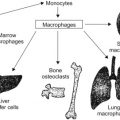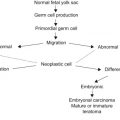Abstract
Iron deficiency is the most common nutritional deficiency in children and is worldwide in distribution, affecting 2 billion people. The prevalence of iron deficiency worldwide is twice as high as iron-deficiency anemia.
Keywords
Hypochromia, microcytic anemia, free erythrocyte protoporphyrin, causes of iron-deficiency anemia, food iron content, iron-refractory iron-deficiency anemia (IRIDA), pica, restless leg syndrome, iron-deficiency anemia diagnosis, serum ferritin, oral iron therapy, parenteral iron therapy
Iron deficiency is the most common nutritional deficiency in children and is worldwide in distribution, affecting 2 billion people. The prevalence of iron deficiency worldwide is twice as high as iron-deficiency anemia.
Prevalence
The incidence of iron-deficiency anemia is high in infancy. It is estimated that 40–50% of children under 5 years of age in developing countries are iron-deficient. The prevalence is 5.5% in inner-city school children ranging in age from 5 to 8 years, 2.6% in pre-adolescent children and 25% in pregnant teenage girls. There is a higher prevalence of iron-deficiency anemia in African-American children than in Caucasian children. Although no socioeconomic group is spared, the prevalence of iron-deficiency anemia is inversely proportional to economic status.
Peak prevalence occurs during late infancy and early childhood when the following may occur:
- •
Rapid growth with exhaustion of gestational iron.
- •
Low levels of dietary iron.
- •
Blood loss due to internal or external bleeding.
- •
Complicating effect of cow’s milk-induced exudative enteropathy due to whole cow’s milk ingestion.
A second peak is seen during adolescence due to rapid growth and suboptimal iron intake. This is amplified in females due to menstrual blood loss.
Table 6.1 lists causes of iron deficiency and Table 6.2 lists infants at high risk for iron deficiency.
|
a Hematuria to the point of iron deficiency is extremely uncommon.
|
a Tea inhibits iron absorption.
Etiologic Factors
Diet
- 1.
In normal infants, 1 mg/kg/day to a maximum of 15 mg/day (assuming 10% absorption) is required.
- 2.
In low-birth-weight infants, infants with low initial hemoglobin values, and those who have experienced significant blood loss, 2 mg/kg/day to a maximum of 15 mg/kg/day is required.
Food Iron Content
A newborn infant is fed predominantly on milk. Breast milk and cow’s milk contain less than 1.5 mg iron per 1000 calories (0.5–1.5 mg/l). Although cow’s milk and breast milk are equally poor in iron, breast-fed infants absorb 20–80% of the iron, in contrast to about 10% absorbed from cow’s milk. The bioavailability of iron in breast milk is much greater than in cow’s milk, for this reason the iron status of breast-fed infants at 6 months of age is better than infants fed cow’s milk. However, after 6 months of age breast-feeding does not protect against iron deficiency and a supplemental source of dietary or medicinal iron is required for optimal iron nutrition.
Most environmental iron exists as insoluble salts and gastric acidity assists in converting it to an absorbable form. Any factors reducing gastric acidity (e.g., drugs—histamine-2 blockers, acid pump blockers; surgical procedures—vagotomy, gastrectomy) impair iron absorption from nonheme sources. The iron present in plant products is limited both by low solubility and the presence of powerful natural chelators, for example, phytates. Heme iron derived from animal sources is the most readily absorbed iron, is independent of gastric pH, and is increased in patients with high erythroid activity associated with reticulocytosis.
Table 6.3 lists the iron content of infant foods.
| Food | Iron, mg | Unit |
|---|---|---|
| Milk | 0.5–1.5 | Liter |
| Eggs | 1.2 | Each |
| Cereal, fortified | 3.0–5.0 | Ounce |
| VEGETABLES (STARCHED) | ||
| Yellow | 0.1–0.3 | Ounce |
| Green | 0.3–0.4 | Ounce |
| MEATS (STRAINED) | ||
| Beef, lamb, liver | 0.4–2.0 | Ounce |
| Pork, liver, bacon | 6.6 | Ounce |
| FRUITS (STRAINED) | ||
| 0.2–0.4 | Ounce | |
Growth
Growth is particularly rapid during infancy and during puberty. Blood volume and body iron are directly related to body weight throughout life. Iron-deficiency anemia can occur at any time when rapid growth outstrips the ability of diet and body stores to supply iron requirements. In the first year of life body weight triples and circulating hemoglobin mass doubles. Each kilogram gain in weight requires an increase of 35–45 mg body iron.
The amount of iron in the newborn is 75 mg/kg. If no iron is present in the diet or blood loss occurs the iron stores present at birth will be depleted by 6 months in a full-term infant and by 3–4 months in a premature infant.
The commonest cause of iron-deficiency anemia is inadequate intake during the rapidly growing years of infancy and childhood.
Blood Loss
Blood loss, an important cause of iron-deficiency anemia, may be due to prenatal, intranatal, or postnatal causes (see Chapter 5 , Table 5.1 ). Hemorrhage occurring later in infancy and childhood may be either occult or apparent ( Table 6.1 ). A number of fecal occult blood tests should be performed in order to exclude intermittent occult gastrointestinal (GI) bleeding.
Iron deficiency by itself, irrespective of its cause, may result in occult blood loss from the gut. More than 50% of iron-deficient infants have guaiac-positive stools. This blood loss is due to the effects of iron deficiency on the mucosal lining (e.g., deficiency of iron-containing enzymes in the gut), leading to mucosal blood loss. This sets up a vicious cycle in which iron deficiency results in mucosal change, which leads to blood loss and further aggravates the anemia. The bleeding due to iron deficiency is corrected with iron treatment. In addition to iron deficiency per se causing blood loss it may also induce an enteropathy, or leaky gut syndrome. In this condition, a number of blood constituents, in addition to red cells, are lost in the gut ( Table 6.4 ).
Cow’s milk can result in an exudative enteropathy associated with chronic GI blood loss resulting in iron deficiency. Whole cow’s milk should be considered the cause of iron-deficiency anemia under the following clinical circumstances:
- •
One quart or more of whole cow’s milk consumed per day.
- •
Iron deficiency accompanied by hypoproteinemia (with or without edema) and hypocupremia (dietary iron-deficiency anemia not associated with exudative enteropathy is usually associated with an elevated serum copper level). It is also associated with hypocalcemia, hypotransferrinemia, and low serum immunoglobulins due to the leakage of these substances from the gut.
- •
Iron-deficiency anemia unexplained by low birth weight, poor iron intake, or excessively rapid growth.
- •
Iron-deficiency anemia recurring after a satisfactory hematologic response following iron therapy.
- •
Rapidly developing or severe iron-deficiency anemia.
- •
Suboptimal response to oral iron in iron-deficiency anemia.
- •
Consistently positive stool guaiac tests in the absence of gross bleeding and other evidence of organic lesions in the gut.
- •
Return of GI function and prompt correction of anemia on cessation of cow’s milk and substitution by soybean or heat-treated cow’s milk formula. Bleeding stops in 3–4 days of cessation of whole cow’s milk.
Blood loss can thus occur as a result of gut involvement due to primary iron-deficiency anemia ( Table 6.4 ) or secondary iron-deficiency anemia as a result of gut abnormalities induced by hypersensitivity to cow’s milk, or as a result of demonstrable anatomic lesions of the bowel, for example, Meckel’s diverticulum.
In postpubescent girls, menstrual blood loss and the increased iron requirements of pregnancy are important causes of iron deficiency. Menstrual losses average approximately 40 ml (20 mg iron) per period and in pregnancy there is an increased requirement of 1200–1500 ml blood (680 mg iron). Most of this iron requirement is in the third trimester when the daily iron requirements rise to 3–7.5 mg requiring supplemental iron to prevent iron deficiency.
Impaired Absorption
Impaired iron absorption due to a generalized malabsorption syndrome (e.g., celiac disease) is an uncommon cause of iron-deficiency anemia. Severe iron deficiency, because of its effect on the bowel mucosa, may induce a secondary malabsorption of iron as well as malabsorption of xylose, fat, and vitamin A ( Table 6.4 ).
Clinical Features
Iron-deficiency anemia is chronic and frequently asymptomatic and may go undiagnosed. Patients are characteristically between 6 months and 3 years of age or between 11 and 17 years of age because these are ages of rapid growth and expanding blood volume. In mild anemia there are usually no symptoms. In severe deficiency, pallor, irritability, anorexia, listlessness, fatigue, and pica (strange craving for nonfood items such as sand, dirt, ice, and clay) may occur. These symptoms are reversed in a few days on iron treatment before the anemia corrects itself. Restless leg syndrome, a syndrome of uncontrollable movement of legs, has been described in iron deficiency. It has been postulated that this is due to tissue iron deficiency of parts of the central nervous system concerned with movement control. The spleen in iron deficiency may be enlarged but of normal consistency.
Iron-Refractory Iron-Deficiency Anemia
This is a rare autosomal recessive disorder (OMIM number 206200). Iron-deficiency anemia is defined as “refractory” when there is absence of hematologic response (an increase of <1 g/dl, of hemoglobin) after 4–6 weeks of treatment with oral iron. Iron-refractory iron-deficiency anemia (IRIDA) is caused by a mutation of TMPRSS6 , the gene encoding transmembrane protease, serine 6, also known as matriptase-2, which inhibits the signaling pathway which activates hepcidin. This type of anemia is variable, more severe in children, and unresponsive to treatment with oral iron. It is characterized by striking microcytosis, extremely low transferrin saturation, normal or borderline-low ferritin levels, and high hepcidin levels. The diagnosis is confirmed by sequencing of TMPRSS6 . IRIDA occurs in less than 1% of cases of iron-deficiency anemia seen in medical practice. Most cases of iron resistance are due to disorders in the GI tract (see Table 6.1 ).
Non-hematological Manifestations
Iron deficiency is a systemic disorder involving multiple systems rather than exclusively a hematologic condition associated with anemia. Table 6.5 lists important iron-containing compounds in the body and their function and Table 6.6 lists the tissue effects of iron deficiency.
| Compound | Function |
|---|---|
| α -Glycerophosphate dehydrogenase | Work capacity |
| Catalase | RBC peroxide breakdown |
| Cytochromes | ATP production, protein synthesis, drug metabolism, electron transport |
| Ferritin | Iron storage |
| Hemoglobin | Oxygen delivery |
| Hemosiderin | Iron storage |
| Mitochondrial dehydrogenase | Electron transport |
| Monoamine oxidase | Catecholamine metabolism |
| Myoglobin | Oxygen storage for muscle contraction |
| Peroxidase | Bacterial killing |
| Ribonucleotide reductase | Lymphocyte DNA synthesis, tissue growth |
| Transferrin | Iron transport |
| Xanthine oxidase | Uric acid metabolism |
|
Stay updated, free articles. Join our Telegram channel

Full access? Get Clinical Tree





